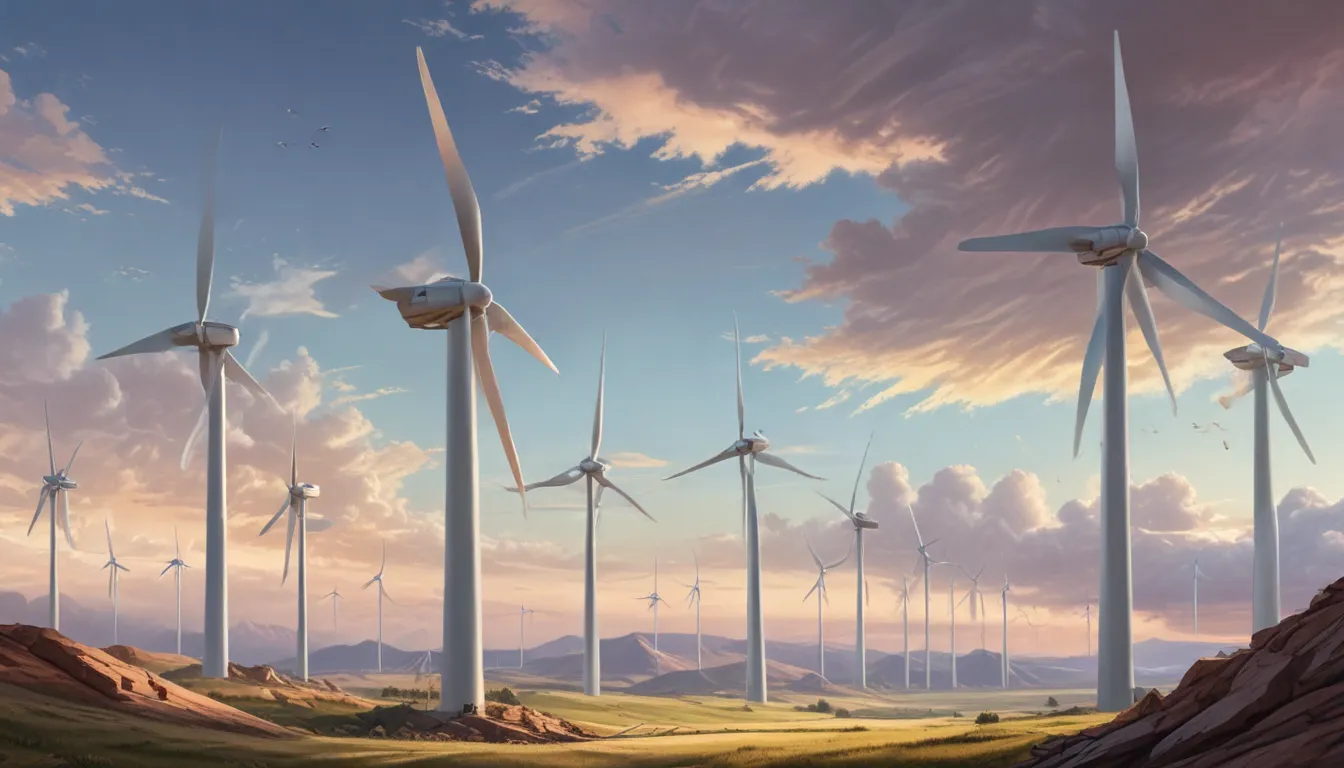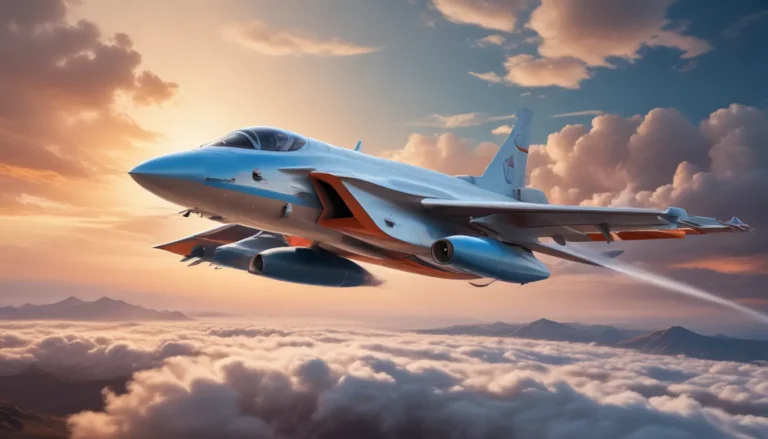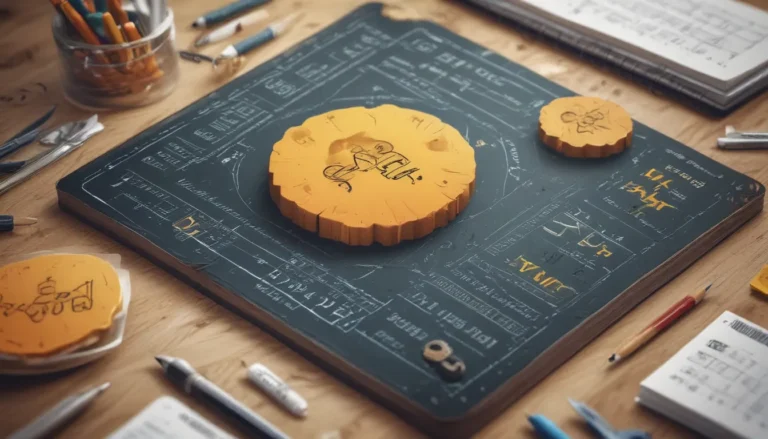A Note About Images: The images used in our articles are for illustration purposes only and may not exactly match the content. They are meant to engage readers, but the text should be relied upon for accurate information.
The world of wind turbines is a captivating realm filled with innovation, sustainability, and promise for a greener future. As these towering structures harness the power of the wind to create clean, renewable energy, they play a vital role in shaping the landscape of modern energy production. In this comprehensive guide, we will delve into 24 fascinating facts about wind turbines, exploring their history, functionality, environmental benefits, and their significance in the transition towards sustainable energy sources. Join us on this enlightening journey through the world of wind turbines as we uncover the remarkable facts that make them a driving force in the realm of renewable energy.
Key Takeaways:
- Wind turbines are a sustainable energy source that reduces greenhouse gas emissions and provides electricity for remote areas.
- The development of wind turbines creates jobs, stimulates local economies, and contributes to a greener, more sustainable future.
The Ancient Roots of Wind Turbines
Wind turbines have a rich history that dates back centuries, with early versions used by ancient civilizations to harness the power of the wind. Over time, the concept of wind power has evolved, leading to the sophisticated wind turbines we see today.
A Milestone in Electricity Generation
In 1887, Charles F. Brush built the first wind turbine designed specifically to generate electricity in Cleveland, Ohio. This marked a significant advancement in the utilization of wind power for producing electricity, laying the foundation for modern wind turbine technology.
Powering Remote Areas with Wind Energy
One of the key advantages of wind turbines is their ability to generate electricity in remote areas where access to the traditional power grid is limited. This makes them a valuable resource for off-grid communities and remote locations seeking sustainable energy solutions.
Engineering Marvels: The Largest Wind Turbines
The largest wind turbine in the world features rotor diameters longer than two football fields, showcasing the impressive scale and engineering prowess behind modern wind turbine designs. These colossal structures push the boundaries of wind energy production to new heights.
Sustainability in Action: Harnessing Wind Energy
Wind turbines are a sustainable energy source that aligns with eco-friendly practices, utilizing the renewable resource of wind to produce electricity without depleting natural resources. This sustainable approach to energy generation is vital for a greener, more sustainable future.
Versatility in Energy Production: From Homes to Wind Farms
Wind turbines can cater to a wide range of energy needs, from powering individual homes to contributing to extensive wind farms that feed electricity into the grid. Their flexibility in application makes wind turbines a versatile and adaptable energy solution.
Leading the Charge: The U.S. Dominance in Wind Energy Production
The United States has emerged as a global leader in wind energy production, boasting a substantial capacity for generating electricity from wind power. This leadership position highlights the country’s commitment to renewable energy initiatives.
Capturing the Power of the Wind: How Wind Turbines Work
Wind turbines operate by capturing the kinetic energy present in the wind and converting it into mechanical or electrical power through the rotation of their blades. This process illustrates the fundamental principle behind wind energy production.
Onshore and Offshore: Diverse Locations for Wind Turbine Installations
Wind turbines can be installed both on land and offshore, offering diverse options for harnessing wind energy in different environments. This flexibility in placement maximizes the potential for wind energy production on a global scale.
Longevity and Durability: The Lifespan of Wind Turbines
Wind turbines are designed to be durable and long-lasting, with an operational lifespan of approximately 20-25 years. Their robust construction ensures reliable performance throughout their service life.
Engineering Feats: The Impressive Dimensions of Wind Turbine Blades
Wind turbine blades can reach lengths longer than a soccer field, emphasizing the engineering feats involved in maximizing energy capture from the wind. These large blades are essential for efficiently harnessing wind energy for electricity generation.
Environmentally Friendly Energy: Reducing Greenhouse Gas Emissions
Wind turbines play a critical role in reducing greenhouse gas emissions by generating clean electricity without relying on fossil fuels. This environmentally friendly approach to energy production helps mitigate the impact of climate change.
Advancing Technology: The Rapid Evolution of Wind Turbines
Technological advancements in wind turbine design and efficiency are driving rapid progress in the wind energy sector. These innovations contribute to the continued growth and evolution of wind energy as a prominent source of electricity.
Low Environmental Impact: The Eco-Friendly Nature of Wind Turbines
Wind turbines have a minimal environmental impact compared to traditional energy sources, making them an environmentally friendly option for sustainable energy production. This eco-friendly attribute positions wind turbines as a key player in the transition towards cleaner energy solutions.
Ensuring Optimal Performance: Regular Maintenance of Wind Turbines
Wind turbines require routine maintenance and inspections to uphold their efficiency and functionality. Regular upkeep is essential to address any issues and prolong the operational lifespan of wind turbines, ensuring reliable performance.
Efficient Energy Conversion: Maximizing Power Generation
Wind turbines boast high energy conversion efficiency, highlighting their effectiveness in converting wind energy into electricity. This efficient energy conversion process underscores the viability of wind turbines as a reliable power generation option.
Job Creation and Economic Growth: Stimulating Local Economies
The development and installation of wind turbines create jobs and stimulate local economies in the regions where they are deployed. This economic impact of wind energy projects contributes to job growth and prosperity in surrounding communities.
Cost-Effective Energy Solutions: Low Operational Costs of Wind Turbines
Once operational, wind turbines have relatively low ongoing operational costs, making them an economically attractive energy solution. The cost-effectiveness of wind energy further enhances its appeal as a sustainable and affordable power source.
Wind Speed Requirements: Initiating Electricity Generation
Wind turbines require a minimum wind speed to start generating electricity effectively. This threshold wind speed ensures optimal performance and efficient power generation from wind energy.
Shaping the Energy Landscape: Wind Turbines as Prominent Features
Wind turbines have become a prominent feature of the modern energy landscape, symbolizing the transition towards renewable energy sources and the diversification of the energy mix. Their widespread adoption reflects their integral role in reducing reliance on conventional power sources.
Energy Security and Independence: Harnessing the Power of Wind
By harnessing wind energy, communities and nations can enhance their energy security and reduce dependence on imported fossil fuels. Wind turbines offer a pathway to energy independence and resilience in the face of energy challenges.
Rural Development and Economic Opportunities: Wind Turbines in Action
The deployment of wind turbines in rural areas contributes to infrastructure development and economic opportunities, bolstering local communities and fostering sustainable growth. Wind energy projects play a vital role in rural development and prosperity.
Stepping Towards a Greener Future: Wind Turbines in Sustainable Transitions
As a cornerstone of sustainable energy initiatives, wind turbines play a pivotal role in driving the world towards a more environmentally conscious and sustainable energy landscape. Their contribution to reducing carbon emissions and promoting clean energy underscores their importance in shaping a greener future.
Innovation and Dedication: Human Ingenuity in Sustainable Energy
The evolution of wind turbines stands as a testament to human innovation and dedication to creating sustainable energy sources that benefit present and future generations. Wind turbines represent a remarkable blend of technology, sustainability, and human commitment towards a cleaner and brighter future.
Conclusion
In conclusion, wind turbines are extraordinary technological marvels that hold immense potential in the realm of renewable energy. As they continue to evolve and advance, wind turbines will play a crucial role in mitigating climate change, reducing greenhouse gas emissions, and promoting a sustainable energy future. With ongoing innovation and investment in wind energy, these towering structures will pave the way for a greener, more sustainable world for generations to come.
FAQs
How do wind turbines work?
Wind turbines capture the kinetic energy of the wind and convert it into mechanical power through the rotation of their blades. This mechanical power is then transformed into electricity using a generator.
What are the environmental benefits of wind turbines?
Wind turbines produce clean, renewable energy, reducing greenhouse gas emissions and air pollution. They have a minimal impact on natural resources and ecosystems compared to traditional fossil fuel-based power generation.
Wind turbines are a fascinating technology that embodies the promise of a sustainable energy future. Their impact on the environment, economy, and energy landscape is profound, making them essential players in the transition towards cleaner and greener energy solutions. As we embrace wind energy and its potential for a better world, let us continue to explore, innovate, and invest in sustainable energy sources that benefit both humanity and the planet we call home.






